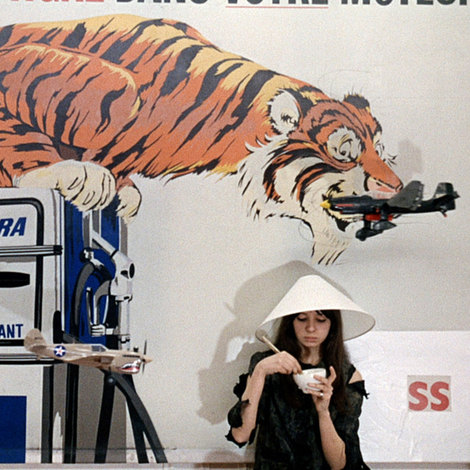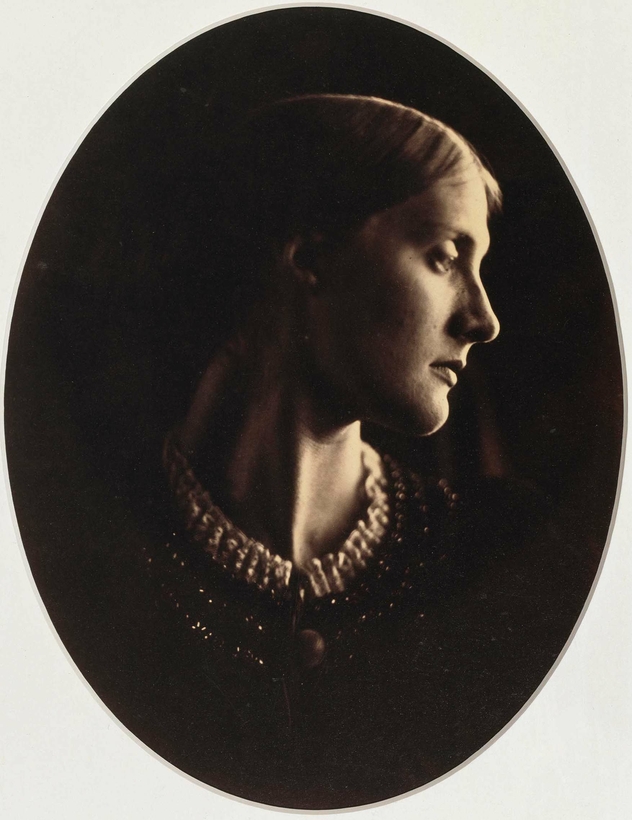Described by Roland Barthes as one of the great “originators” of photography, Julia Margaret Cameron was a creature like no other. She picked up her first camera in 1863, when she was 48. A gift from her daughter, the camera was delivered with a note that now reads like an award-winning example of British understatement: “It may amuse you, Mother, to try to photograph during your solitude at Freshwater.” In that seaside village, on England’s Isle of Wight, she made almost 1,000 images that to this day look like no one else’s. “Arresting Beauty: Julia Margaret Cameron” opens at the Jeu de Paume on October 10, the first Paris exhibition of the artist since 1985. It will be fascinating to see how this new interest in Cameron expresses itself in the creative Zeitgeist of the fashion capital.

Cameron was born in Calcutta, India, in 1815, one of the seven famous Pattle sisters, all of whom were educated in France. She was known to have an eccentric nature but also a generosity of spirit. As a young bride in Calcutta, acting as a hostess for the governor general, Sir Henry Hardinge, Cameron led European society. On her return to England with her husband and children, she threw herself into London’s artistic circles. It wasn’t until Freshwater, at the foot of Alfred, Lord Tennyson’s garden, in a house the Camerons formed out of two fishermen’s cottages and named “Dimbola,” that her passion finally found its medium. From a standing start in a renovated chicken coop, and working with glass negatives, Cameron began her remarkable photographic practice.
She kept an open house, a clever mix of snowy-bearded “idols” such as Tennyson, Charles Darwin, and G. F. Watts, beautiful women, and untidy children. To imagine that the family’s life at Dimbola was a giddy round of drama, dress-up, and photo shoots—as satirized by Julia’s great-niece Virginia Woolf in her play, Freshwater—is almost certainly true. However, while Woolf meant to take the mickey out of her great-aunt’s passion for artistic purity, Cameron was deadly serious. “I longed to arrest all the beauty that came before me, and at length the longing was satisfied,” she wrote in her autobiography, Annals of My Glass House. Despite the arduous process involving those large glass negatives, Cameron took shot after shot until she was satisfied.

Trial and error were part of her process. Judging each image on its aesthetic appeal rather than on its technical merit, Cameron destroyed plates and continued shooting until miraculously, in her coal-house darkroom, “beauty” revealed itself. (Although labor-intensive, the collodion process was almost instantaneous.) Her portraits of great men are uniquely classical and loving. Her tableaux vivant—taken in her little thatched-roof theater to illustrate Tennyson’s Arthurian poems and Shakespeare’s plays—though once derided as kitsch, are now seen as pioneering examples of fashion styling, as are her ethereal images of women and the child angels she fitted with white wings.

Cameron’s special technique was to shoot slightly out of focus, and contemporary critics who peck at her lack of technical perfection miss the point. To stand in front of her work is to be subsumed in haunting sepia tones, like fragments of a silent movie we can no longer see. Her photographs of women are powerfully modern, testament to Cameron’s desire to liberate female personae. While her titles may be from another age, Despair, with its wilted lilies, is distinctly 20th century. The mystery model Hatty Campbell as The Echo, and the beloved Victorian actress Ellen Terry as Sadness and The South West Wind, are simply breathtaking.
“Arresting Beauty: Julia Margaret Cameron” will be on at the Jeu de Paume, in Paris, beginning October 10
Check out AIR MAIL’s Arts Intel Report, our newly revamped research tool for what to do and where and when to do it
Sarah Hyde is a London-based writer

